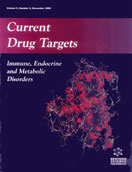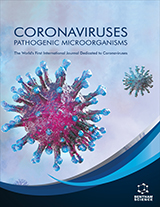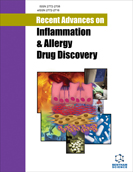Abstract
Lysophospholipids (LPLs), including glycerol- and sphingoid-based lipids, stimulate cell signaling and play important pathophysiological roles in humans and other animals. These LPLs include lysophosphatidic acid (LPA), lysophosphatidylinositol (LPI), lysophosphatidylcholine (LPC), lysophosphatidylserine (LPS), sphingosine-1-phosphate (S1P), and sphingosylphosphorylcholine (SPC). Analyses of LPLs in human body fluids from subjects with different pathophysiological conditions reveal not only the relevance of LPLs in human diseases, but also their potential application as biomarkers and / or therapeutic targets. In recent years, the identification and / or characterization of the plasma membrane receptors for LPLs and enzymes regulating the metabolism of LPLs have greatly facilitated our understanding of their role and signaling properties. In vitro and in vivo functional and signaling studies have revealed the broad and potent biological effects of LPLs and the mechanisms of LPL actions in different cellular systems. Development of specific antagonists for each of the LPL receptors will provide powerful tools for dissecting signaling pathways mediated by receptor subtypes. More importantly, these antagonists may serve as therapeutics for relevant diseases. Genetic depletion of LPL receptors in mice has provided and will continue to provide critical information on the pathophysiological roles of LPL receptors. It is important to further evaluate the significance of targeting these bioactive LPL receptors, their downstream signaling molecules, and / or metabolic enzymes in the treatment of cancers and other diseases.
Keywords: lysophospholipids (lyso-pls), lysophosphatidic acid (lpa), sphingosine-1-phosphate (s1p), sphingosylphosphorylcholine (spc), lysophosphatidylinositol (lpi), lysophosphatidylcholine (lpc), ovarian cancer, g protein coupled receptors (gpcrs)
Current Drug Targets - Immune, Endocrine & Metabolic Disorders
Title: Unfolding the Pathophysiological Role of Bioactive Lysophospholipids
Volume: 3 Issue: 1
Author(s): Yan Xu, Yi-jin Xiao, Kui Zhu, Linnea M. Baudhuin, Jun Lu, Guiying Hong, Kwan-sik Kim, Kelly L. Cristina, Li Song and Freager S. Williams
Affiliation:
Keywords: lysophospholipids (lyso-pls), lysophosphatidic acid (lpa), sphingosine-1-phosphate (s1p), sphingosylphosphorylcholine (spc), lysophosphatidylinositol (lpi), lysophosphatidylcholine (lpc), ovarian cancer, g protein coupled receptors (gpcrs)
Abstract: Lysophospholipids (LPLs), including glycerol- and sphingoid-based lipids, stimulate cell signaling and play important pathophysiological roles in humans and other animals. These LPLs include lysophosphatidic acid (LPA), lysophosphatidylinositol (LPI), lysophosphatidylcholine (LPC), lysophosphatidylserine (LPS), sphingosine-1-phosphate (S1P), and sphingosylphosphorylcholine (SPC). Analyses of LPLs in human body fluids from subjects with different pathophysiological conditions reveal not only the relevance of LPLs in human diseases, but also their potential application as biomarkers and / or therapeutic targets. In recent years, the identification and / or characterization of the plasma membrane receptors for LPLs and enzymes regulating the metabolism of LPLs have greatly facilitated our understanding of their role and signaling properties. In vitro and in vivo functional and signaling studies have revealed the broad and potent biological effects of LPLs and the mechanisms of LPL actions in different cellular systems. Development of specific antagonists for each of the LPL receptors will provide powerful tools for dissecting signaling pathways mediated by receptor subtypes. More importantly, these antagonists may serve as therapeutics for relevant diseases. Genetic depletion of LPL receptors in mice has provided and will continue to provide critical information on the pathophysiological roles of LPL receptors. It is important to further evaluate the significance of targeting these bioactive LPL receptors, their downstream signaling molecules, and / or metabolic enzymes in the treatment of cancers and other diseases.
Export Options
About this article
Cite this article as:
Xu Yan, Xiao Yi-jin, Zhu Kui, Baudhuin M. Linnea, Lu Jun, Hong Guiying, Kim Kwan-sik, Cristina L. Kelly, Song Li and Williams S. Freager, Unfolding the Pathophysiological Role of Bioactive Lysophospholipids, Current Drug Targets - Immune, Endocrine & Metabolic Disorders 2003; 3 (1) . https://dx.doi.org/10.2174/1568005310303010023
| DOI https://dx.doi.org/10.2174/1568005310303010023 |
Print ISSN 1568-0088 |
| Publisher Name Bentham Science Publisher |
Online ISSN 1875-5917 |
 91
91Related Articles
-
Targeting Cancer Stem Cell Lines as a New Treatment of Human Cancer
Recent Patents on Anti-Cancer Drug Discovery Privileged 1,2,4-Oxadiazoles in Anticancer Drug Design: Novel 5- Aryloxymethyl-1,2,4-oxadiazole Leads for Prostate Cancer Therapy
Letters in Drug Design & Discovery Targeting Protein Tyrosine Phosphatases for Anticancer Drug Discovery
Current Pharmaceutical Design Poly-L-arginine: Enhancing Cytotoxicity and Cellular Uptake of Doxorubicin and Necrotic Cell Death
Anti-Cancer Agents in Medicinal Chemistry Lipid-Based Drug Delivery Systems for Cancer Treatment
Current Drug Targets Design, Synthesis, Molecular Docking and Biological Evaluation of 1-(benzo[d]thiazol-2-ylamino)(phenyl)methyl)naphthalen-2-ol Derivatives as Antiproliferative Agents
Letters in Organic Chemistry Small Molecules for Immunomodulation in Cancer: A Review
Anti-Cancer Agents in Medicinal Chemistry Quercetin and MicroRNA Interplay in Apoptosis Regulation in Ovarian Cancer
Current Pharmaceutical Design Potential of Modulating Wnt Signaling Pathway Toward the Development of Bone Anabolic Agent
Current Molecular Pharmacology Inhibitors of HDACs - Effective Drugs Against Cancer?
Current Cancer Drug Targets Polymorphisms in Methotrexate Pathways: What Is Clinically Relevant, What Is Not, and What Is Promising
Current Drug Metabolism Osteosarcoma of the Jaws: A Literature Review
Current Medical Imaging 3D-QSAR (CoMFA, CoMSIA) and Molecular Docking Studies on Histone Deacetylase 1 Selective Inhibitors
Recent Patents on Anti-Cancer Drug Discovery Glycerophospholipid Synthesis as a Novel Drug Target Against Cancer
Current Molecular Pharmacology HPV Pathway Profiling: HPV Related Cervical Dysplasia and Carcinoma Studies
Current Pharmaceutical Design YB-1 Activities in Oncogenesis: Transcription and Translation
Current Cancer Therapy Reviews Fibroblast Growth Factor Receptor Signaling in Cancer Biology and Treatment
Current Signal Transduction Therapy Meet Our Editorial Board Member
Current Cancer Drug Targets Glycosylation of Tetraspanin Tspan-1 at Four Distinct Sites Promotes Its Transition Through the Endoplasmic Reticulum
Protein & Peptide Letters Telomerase Modulation in Therapeutic Approach
Current Pharmaceutical Design



















